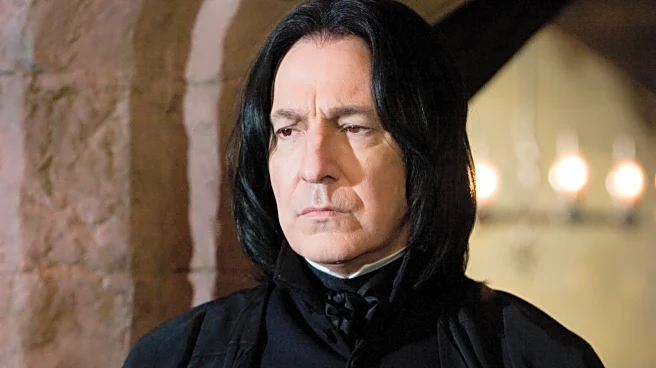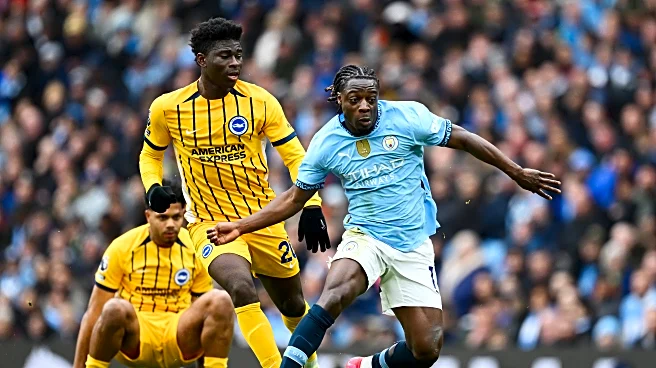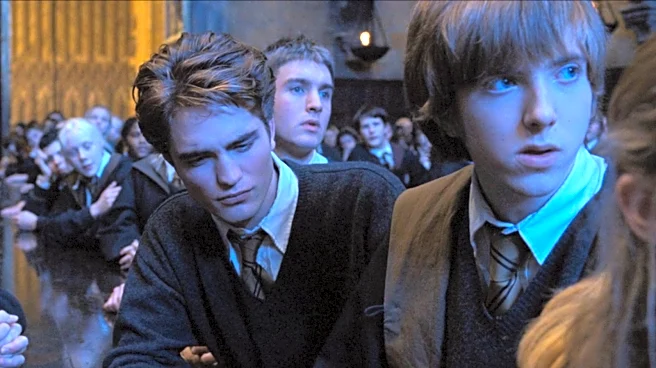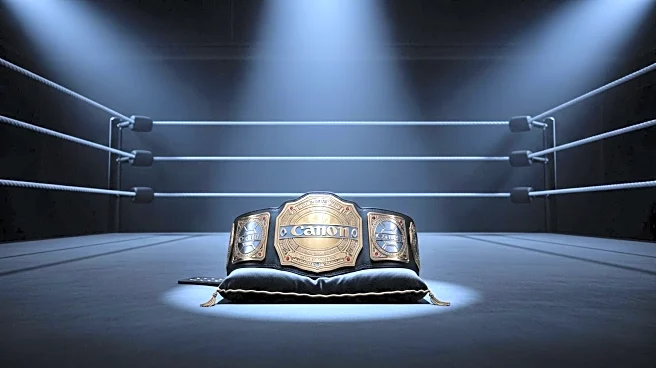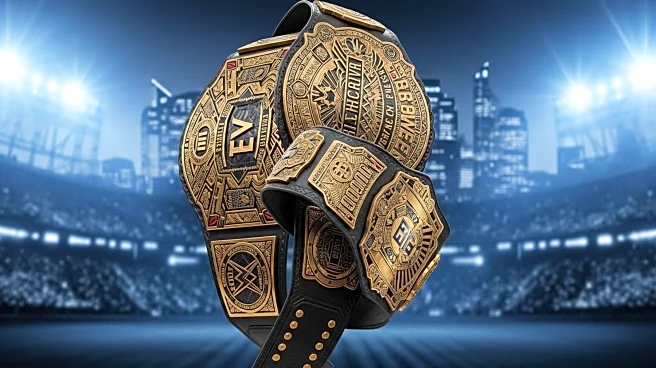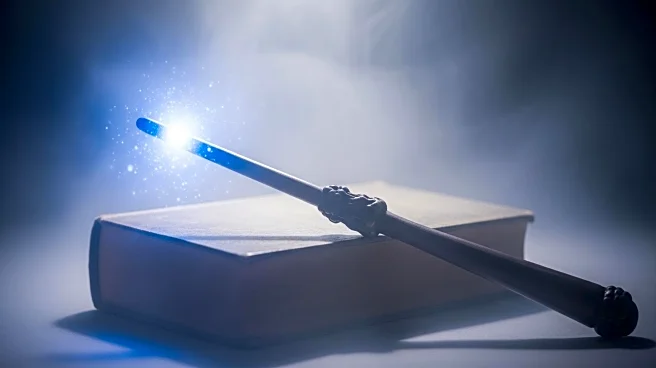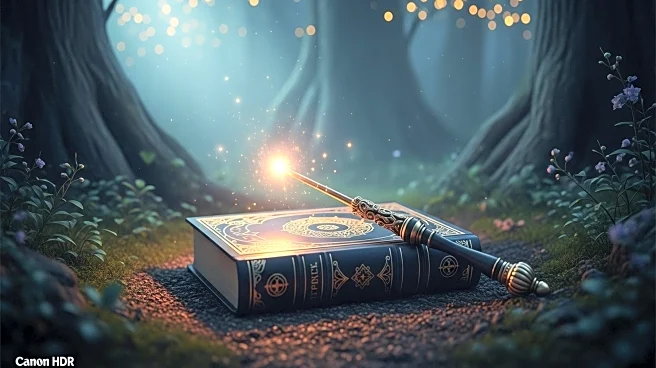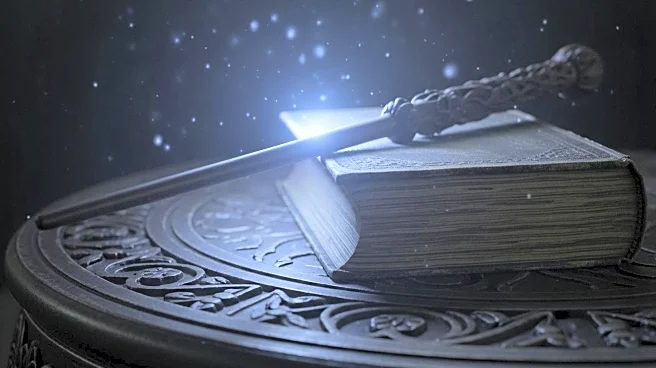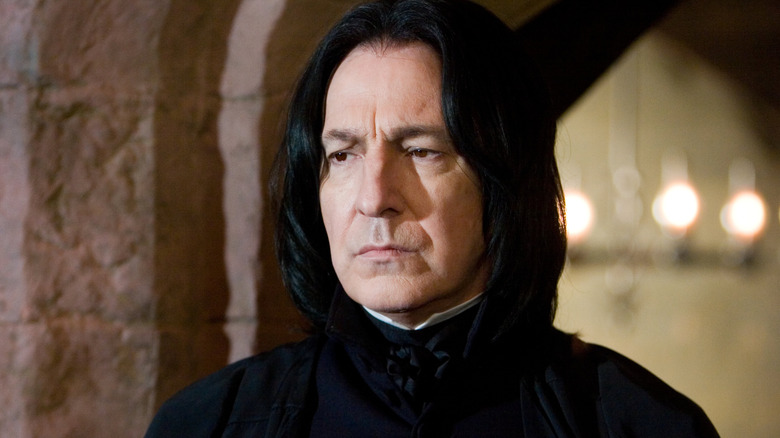
There are a lot of magical links to a person's identity in the wizarding world of "Harry Potter." What does that mean? Well, if you live in the United Kingdom, you prepare for your enrollment at Hogwarts School of Witchcraft and Wizardry by picking out your very first magic wand, and everything from the wood used to make the wand to its flexibility and magical core (like a phoenix feather or dragon heartstring) says something about the individual witch or wizard who wields it. Picking a pet for Hogwarts is
even its own form of a personality test — what does it say about you if you pick a toad?! — and when you arrive at Hogwarts, you're sorted into a house (Gryffindor if you're brave, Ravenclaw if you're clever, Slytherin if you're evil, and Hufflepuff if you're ... helpful or something). After a few years of magical training, young wizards learn to cast a Patronus Charm, wherein they use happy personal memories to conjure a magical protector who can fight against evil dementors, and Patronuses take the form of a different animal depending on who casts it.
This brings me to Severus Snape, a Slytherin alum and Death Eater turned double agent, played in the original "Harry Potter" film franchise by the late, great Alan Rickman. For most of said franchise, we think Snape, who serves as the Potions master and Defense Against the Dark Arts professor at Hogwarts, is a simply evil guy ... until we discover that he's been working against the evil Lord Voldemort (Ralph Fiennes) and for Hogwarts headmaster Albus Dumbledore (Michael Gambon). Also, his patronus is a doe, which seems unexpectedly sweet and gentle for a guy as disgruntled and misanthropic as Snape. Importantly, wizards don't seem to be able to consciously choose a Patronus; when our protagonist Harry (Daniel Radcliffe) casts his first Patronus Charm in the films, it takes the shape of a stag to honor his father, James Potter, an Animagus who could transform into a stag at will. So what is the significance of Snape's doe Patronus, and how does it factor into his rather complicated backstory?
Read more: 10 Completed Movies That Were Never Released
Snape's Lifelong Love For Lily Potter Is Reflected In His Patronus

If you consider the fact that James Potter could become a stag at will and is represented by that animal in his son's Patronus, it does make sense that Lily Potter's Patronus was, apparently, a doe (which also sort of indicates that Harry's parents were destined to be together in some way). So how does this connect to Severus Snape, and why do the two share a Patronus?
Let's start with the climax of both the book and film of "Harry Potter and the Half-Blood Prince," where Snape kills Dumbledore, inspiring vengeance and enmity in Harry ... even though this incident is merely another step in Snape's own vengeance against Voldemort. As children, Lily and Snape lived close to each other and became friends, particularly when Lily, a Muggleborn witch, started showing signs of magical ability. The two remain friends despite being sorted into two different Hogwarts houses — Lily is deemed a Gryffindor, while Snape heads to Slytherin — but ultimately, Snape's sinister friends, all of whom eventually become legitimately loyal Death Eaters, come between them. Lily links up with James, who just so happens to be a bully towards Snape, and the divide between Lily and Snape becomes permanent, even though Snape clearly loves Lily. (We learn this backstory in "Harry Potter and the Deathly Hallows" when a dying Snape shares his memories with Harry.)
As a young Death Eater, Snape is sent to spy on Dumbledore and Professor Sybill Trelawney (Emma Thompson in the films) as she interviews for the post of Divination professor at Hogwarts, and he ends up overhearing part of a prophecy about Voldemort — and, ultimately, Harry. By giving his boss incomplete information, Snape accidentally ensures that Voldemort kills both Lily and James, and in mourning for the woman he loved, he returns to Dumbledore and agrees to be a double agent and work to undermine Voldemort's cause. So when do we learn about Snape's Patronus, and how does it help Harry and his two best friends, Ron Weasley and Hermione Granger (Rupert Grint and Emma Watson), as they hunt for Voldemort's Horcruxes?
Snape's Doe Patronus Helps Harry In His Horcrux Hunt
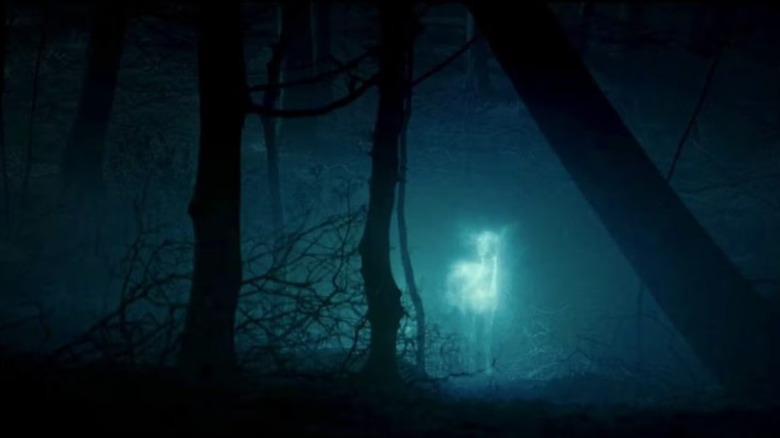
First things first: Horcruxes, as a reminder, are items that contain pieces of Voldemort's soul, ensuring that he cannot die while they remain intact. After Harry and Dumbledore find a false locket Horcrux in "Half-Blood Prince," Harry, Ron, and Hermione set out to find the real Horcruxes and destroy all of them to bring down Voldemort's extremely dark protective forces in "Harry Potter and the Deathly Hallows." When they track down the real locket, which once belonged to Hogwarts founder Salazar Slytherin, wearing it takes such an emotional toll on Ron in particular that he briefly abandons the mission. One night, Ron returns rather suddenly after a mysterious doe Patronus leads Harry to a frozen lake where the sword of Gryffindor, a powerful magical artifact imbued with basilisk venom — making it destructive enough to take down the Horcrux — can be seen at the bottom, and when Harry dives to find it and nearly drowns, Ron saves his life before they destroy the Horcrux together.
At this point in the story, Harry has no idea where this Patronus came from, and it's only later, when he sees Snape's extensive memories, that he realizes Snape and Dumbledore were always in cahoots to protect him, even after Dumbledore's passing (the two wizards then communicate through Dumbledore's official, speaking portrait). Snape uses the Patronus to lead Harry to the Horcrux, and elsewhere in his memories, he expresses anger to Dumbledore that he'll be forced to help Harry find the Horcruxes only to sacrifice himself to Voldemort (because Harry himself is the final Horcrux). The scene that follows is quite famous among "Harry Potter" fans, and it goes like this:
"'But this is touching, Severus,' said Dumbledore seriously. 'Have you grown to care for the boy, after all?''For him?' shouted Snape. 'Expecto Patronum!'From the tip of his wand burst the silver doe. She landed on the office floor, bounded once across the office, and soared out of the window. Dumbledore watched her fly away, and as her silvery glow faded he turned back to Snape, and his eyes were full of tears.'After all this time?''Always," said Snape.'"
Snape's devotion to a deceased woman who, by all accounts, never loved him back romantically is ... certainly something, but at least he uses his unrequited love for good by helping Harry bring down one of the most evil wizards of all time. If you want to revisit Alan Rickman's stunning performance in the "Harry Potter" films, including the massive reveal of Snape's true allegiance in "Harry Potter and the Deathly Hallows — Part 2," they're streaming on both HBO Max and Peacock now.
If you're looking for the easiest way to keep up with all the major movie and TV news, why not sign up to our free newsletter?
Read the original article on SlashFilm.
